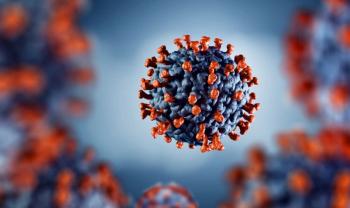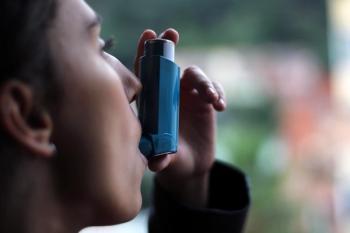
Supreme Court Considers Mifepristone Limits in First Case Since Dobbs
This week, a divided America watched as the Supreme Court heard oral arguments regarding whether to reinstate restrictions on accessing mifepristone, an essential drug used in medication abortion.
In recent years, the issue of abortion has attracted much political and legal attention. After the constitutional right to abortion was overturned in the Supreme Court’s ruling of Dobbs v Jackson Women’s Health Organization, the abortion landscape in the US fractured.1 Thirteen states wasted no time in enacting trigger laws designed to immediately ban abortion the moment federal protections were overturned.2 Elsewhere, states remained committed to preserving essential reproductive care. Two years later, political momentum on the issue has not let up.
What's the Issue?
Mifepristone, a medication abortion drug, was approved in 2000 by the FDA.3 Originally, the conditions of the approval required that only physicians could give the drug to women in-person. But in 2021, the FDA amended these conditions to expand access to mifepristone amid stay-at-home orders and office closures during the COVID-19 pandemic. The agency permanently removed the in-person dispensing requirement associated with mifepristone, and
In 2022, the Supreme Court overturned Roe v Wade, effectively ending all federal protections on abortion and returning the power to regulate the practice back to the states and their elected representatives.1 Just this week, the first abortion case since that ruling took place in the Supreme Court in FDA v Alliance for Hippocratic Medicine (AHM), and Danco Laboratories LLC v AHM. The high court will review a lawsuit from the AHM aimed at shortening the window during pregnancy to use medication abortion and reinstating the in-person dispensing requirement to receive mifepristone, challenging the FDA’s 2021 decision that expanded its access.3
Why it Matters
Although the FDA may have eased in-person restrictions on
- Medication abortion is a safe and effective option preferred by many women in the US for ending a pregnancy; in 2023, medication abortion accounted for 63% for all US abortions.5
- Since its approval in 2000, more than 5 million people in the US have used mifepristone for medication abortion and miscarriage management; research has demonstrated that the drug has a better safety record than household medications like Viagra, penicillin, and Tylenol.6
- Just this month, CVS and Walgreens
announced they will start dispensing mifepristone in states where abortion is allowed, increasing access to the essential drug.7 - According to an amicus curiae brief, reinstating mifepristone restrictions would disproportionately impact people of color, people with low incomes, LGBTQ+ people, young people, immigrants, and people with disabilities.8
Expert Commentary
Despite the result of its 2022 decision, the Supreme Court seems likely to maintain access to mifepristone. The justices were skeptical whether the anti-abortion doctors who filed the lawsuit against the FDA had legal standing to sue, citing “federal conscience protections” that already shield physicians from providing care, such as abortion, that they morally object to.9
- “[The physicians] are saying, ‘Because we object to having to be forced to participate in this procedure, we’re seeking an order preventing anyone from having access to these drugs at all,” said Justice Ketanji Brown Jackson.10 “And I guess I’m just trying to understand how they could possibly be entitled to that.”
- “You need a person. You need a person to be able to come in and meet the court’s regular standing requirements,” said Justice Elena Kagan, challenging the anti-abortion doctors’ argument to overturn mifepristone access on the basis that it causes “conscience harm.”11 Kagan continued, “So who’s your person?”
- “Even the conservative justices seemed skeptical of the standing claims and the merits of case were not really the focus,” said Greer Donley, professor of law at the University of Pittsburgh School of Law and leader of a brief submitted to the court regarding the case.4 “If enough justices thought there was standing then there would be more focus on the merits.”
In-Depth Insights
- The AHM, a collective of anti-abortion groups, filed their initial lawsuit against the FDA on November 18, 2022, in Amarillo, Texas. It challenged the FDA’s approval of mifepristone in 2000 on 3 grounds: insufficient safety studies, lack of authority to approve the drug, and a violation of an old
anti-obscenity law .7 The Supreme Court announced on December 13, 2023, that it would pick the case up after it traveled through lower courts; it is poised to make a ruling about the case in June 2024. - The Supreme Court justices also weighed how the impact of their decision could affect the proceedings of the FDA. According to the American Medical Association, “allowing courts to upend drug regulatory decisions by the FDA based on speculation, opinion or ideology goes against the long-established scientific process that leads to those careful decisions and puts every other drug at risk of findings itself subject to similar efforts.”12
- Next month, the Supreme Court is slated to hear another case on abortion that will determine whether medical providers are obligated to provide abortions to patients in crisis.13
Extra Reading
https://www.statnews.com/2024/03/26/supreme-court-mifepristone-arguments-fda/ (STAT)https://www.axios.com/2024/03/19/medication-abortion-mifepristone-2023-study (Axios)https://apnews.com/article/supreme-court-abortion-mifepristone-telemedicine-4406d53e8af90f6a523264f535f5adf8 (AP News)
READ MORE:
References
1. Totenberg N, McCammon S. Supreme Court overturns Roe v. Wade, ending right to abortion upheld for decades. NPR. June 24, 2022. Accessed March 28, 2024. https://www.npr.org/2022/06/24/1102305878/supreme-court-abortion-roe-v-wade-decision-overturn
2. Nash E, Guarnieri I. 13 states have abortion trigger bans—here’s what happens when Roe is overturned. Guttmacher Institute. June 6, 2022. Accessed March 28, 2024. https://www.guttmacher.org/article/2022/06/13-states-have-abortion-trigger-bans-heres-what-happens-when-roe-overturned
3. Perrone M. A common abortion pill will come before the US Supreme Court. Here’s how mifepristone works. AP News. December 13, 2023. Accessed March 28, 2024. https://apnews.com/article/mifepristone-supreme-court-abortion-d451e14148ffbe6ce4811b1a37651480
4. Owermohle S. Supreme Court mifepristone arguments focus on physicians’ right to sue, not FDA judgment. STAT. March 26, 2024. Accessed March 28, 2024. https://www.statnews.com/2024/03/26/supreme-court-mifepristone-arguments-fda/
5. Saric I. Medication abortion makes up 63% of U.S. abortions, study finds. Axios. March 19, 2024. Accessed March 28, 2024. https://www.axios.com/2024/03/19/medication-abortion-mifepristone-2023-study
6. Choi A, Mullery W. How safe is the abortion pill compared with other common drugs? CNN. December 13, 2023. Accessed March 28, 2024. https://www.cnn.com/health/abortion-pill-safety-dg/index.html
7. Biscaldi L. Breaking: CVS, Walgreens to begin mifepristone dispensing this month. Drug Topics. March 1, 2024. Accessed March 28, 2024. https://www.drugtopics.com/view/breaking-cvs-walgreens-to-begin-mifepristone-dispensing-this-month
8. Amicus Curiae Brief for Petitioners. U.S. Food and Drug Admin. v. All. for Hippocratic Med., Nos. 23-235, 23-236 (petition for cert. filed Sept. 08, 2023). [Brief for Petitioners as Amicus Curiae at 12]. Accessed March 28, 2024. https://www.supremecourt.gov/DocketPDF/23/23-235/299146/20240130105347923_23-235%2023-236%20tsac%20237%20Reproductive%20Health%20Rights%20and%20Justice%20Organizations.pdf
9. Quinn M. Supreme Court seems poised to reject abortion pill challenge after arguments over FDA actions. CBS News. March 26, 2024. Accessed March 28, 2024. https://www.cbsnews.com/news/supreme-court-abortion-pill-arguments-mifepristone/
10. Chung A, Kruzel J. US Supreme Court appears skeptical of challenge to abortion pill access. Reuters. March 27, 2024. Accessed March 28, 2024. https://www.reuters.com/world/us/biden-administration-defends-abortion-pill-access-us-supreme-court-2024-03-26/
11. Hutzler A, Kekatos A. In abortion pill hearing, Supreme Court sounds skeptical of challenge to mifepristone access. ABC News. March 26, 2024. Accessed March 28, 2024. https://abcnews.go.com/Politics/live-updates/abortion-pill-supreme-court-hearing/attorney-for-danco-labs-warns-of-broader-consequences-for-drug-approvals-108509576?id=108467730
12. Resneck J Jr. Judge’s ruling on mifepristone has no basis in medical science. American Medical Association. April 12, 2023. Accessed March 28, 2024. https://www.ama-assn.org/about/leadership/judge-s-ruling-mifepristone-has-no-basis-medical-science
13. Sherman M. The Supreme Court is allowing Idaho to enforce its strict abortion ban, even in medical emergencies. AP News. January 5, 2024. Accessed March 28, 2024. https://apnews.com/article/supreme-court-abortion-medical-emergencies-idaho-8ca89d7de0c1fa9256dcd27d1847e144
Newsletter
Pharmacy practice is always changing. Stay ahead of the curve with the Drug Topics newsletter and get the latest drug information, industry trends, and patient care tips.













































































































































